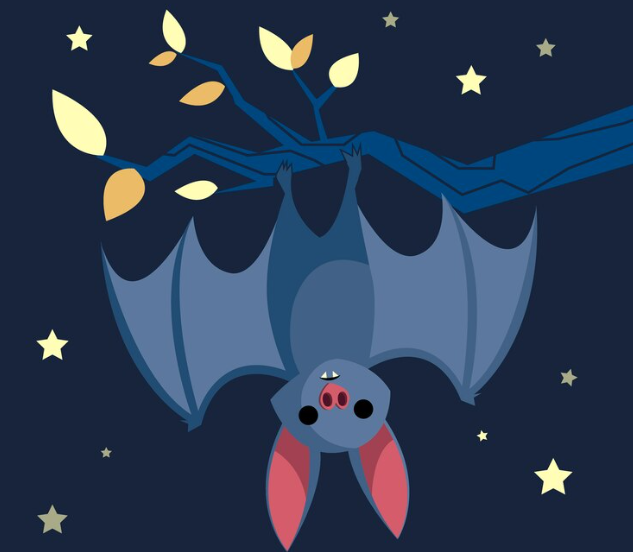I. Introduction
Bats, often misunderstood and shrouded in mystery, are fascinating creatures with an array of characteristics that can be surprisingly endearing. While some may associate bats with eerie nocturnal activity, there exists a variety of bat species that possess undeniably cute features, captivating the hearts of nature enthusiasts and casual observers alike. Cute bats, characterized by their big eyes, small size, and fluffy fur, play crucial roles in ecosystems around the world, including pollination, pest control, and seed dispersal.
II. Species of Cute Bats
A. Honduran White Bat (Ectophylla alba)
The Honduran White Bat, with its striking appearance, stands out as one of the cutest bat species. These bats are small, with a body length of about 4-5 centimeters. They boast pure w+hite fur contrasted by bright yellow noses and ears, making them visually distinct. Native to Central America, they inhabit dense forests and create tents from large leaves for shelter. These bats primarily feed on fruit and have a unique social structure, often found in small groups.
B. Egyptian Fruit Bat (Rousettus aegyptiacus)
Egyptian Fruit Bats are known for their large, expressive eyes and soft, furry bodies, which contribute to their cuteness. They are medium-sized bats found across Africa and parts of the Middle East. These nocturnal creatures roost in caves and feed mainly on fruits, playing a significant role in seed dispersal. Their gentle feeding habits and social nature, often seen clustering together in large colonies, add to their charm.
C. Flying Foxes (Genus Pteropus)
Flying Foxes, particularly those in the genus Pteropus, are among the largest bat species. Despite their size, their fox-like faces and large, soulful eyes make them appear endearing. These bats are widespread across Asia, Australia, and islands in the Indian and Pacific Oceans. They have a varied diet that includes fruits, flowers, and nectar, contributing significantly to pollination. Flying Foxes are known for their strong social bonds and are often observed grooming each other, which enhances their cute appeal.
III. Characteristics Contributing to Cuteness
A. Physical Attributes
1.Big, Expressive Eyes: Many cute bat species have large eyes that give them a baby-like appearance, invoking a sense of affection from observers.
2. Fluffy Fur: The presence of soft, fluffy fur makes these bats look cuddly and appealing.
3. Small and Round Body: Smaller bat species with rounded bodies often appear more approachable and less intimidating.
B. Behaviors
1. Social Interactions: Cute bats frequently engage in social behaviors such as cuddling in groups and playful activities, which are endearing to watch.
2. Feeding Habits: Observing bats delicately eating fruits or drinking nectar can be a delightful sight, emphasizing their harmless and gentle nature.
IV. Cultural Perception of Cute Bats
A. Media and Pop Culture
Cute bats have made their way into movies, TV shows, and literature, where they are often depicted in a positive light, helping to shift public perception from fear to fascination. Their adorable features and intriguing behaviors make them popular subjects in children’s books and wildlife documentaries.
B. Impact on Tourism
The allure of cute bats has contributed to the growth of ecotourism. Wildlife sanctuaries and bat-watching tours attract visitors eager to observe these creatures in their natural habitats. Such tourism not only provides an economic boost to local communities but also raises awareness about bat conservation.
V. Conservation Efforts
A. Threats to Bat Populations
Despite their importance, many bat species face significant threats. Habitat destruction, driven by deforestation and urbanization, poses a severe risk. Additionally, diseases like White-nose Syndrome have decimated bat populations in North America, highlighting the urgent need for conservation.
B. Conservation Programs
1. Habitat Protection and Restoration: Efforts to preserve and restore natural habitats are crucial for the survival of bat species. Protecting roosting sites and feeding grounds ensures that bats can thrive.
2.Research and Monitoring: Scientific research and monitoring programs help track bat populations and health, providing critical data for conservation strategies.
3.Public Education and Awareness: Raising public awareness about the ecological importance of bats and dispelling myths is vital. Education initiatives encourage communities to protect bats and their habitats.
VI. How to Support Bat Conservation
A. Personal Actions
Individuals can take simple yet effective actions to support bat conservation. Creating bat-friendly gardens with native plants that provide food and shelter can attract bats. Installing bat houses offers safe roosting sites, helping to maintain local bat populations.
B. Supporting Organizations
Supporting bat conservation organizations through donations or volunteering can make a significant impact. These organizations work tirelessly to protect bats and their habitats, conduct research, and educate the public about the importance of bats in our ecosystems.
VII. Conclusion
Cute bats, with their captivating looks and essential ecological roles, deserve our admiration and protection. By understanding their importance and taking steps to support conservation efforts, we can ensure that these adorable nighttime navigators continue to thrive. Whether through personal actions or supporting larger conservation initiatives, everyone can contribute to safeguarding the future of cute bats and the ecosystems they sustain.
